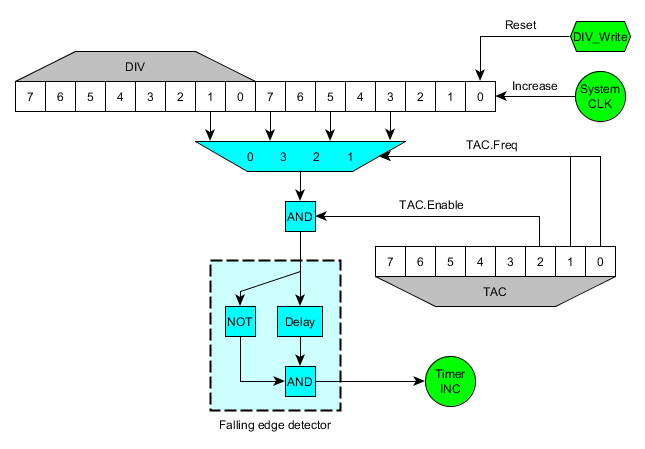Timer Obscure Behaviour
Relation between Timer and Divider register
This is a schematic of the circuit involving TAC and DIV:
Notice how the values that are connected to the inputs of the multiplexer are the values of those bits, not the carry of those bits. This is the reason of a few things:
- When writing to DIV, the whole counter is reseted, so the timer is also affected.
- When writing to DIV, if the current output is '1' and timer is enabled, as the new value after reseting DIV will be '0', the falling edge detector will detect a falling edge and TIMA will increase.
- When writing to TAC, if the previously selected multiplexer input was '1' and the new input is '0', TIMA will increase too. This doesn't happen when the timer is disabled, but it also happens when disabling the timer (the same effect as writing to DIV). The following code explains the behaviour in DMG and MGB.
clocks_array[4] = {1024, 16, 64, 256}
old_clocks = clocks_array[old_TAC&3]
new_clocks = clocks_array[new_TAC&3]
old_enable = old_TAC & BIT(2)
new_enable = new_TAC & BIT(2)
sys_clocks = 16 bit system counter
IF old_enable == 0 THEN
glitch = 0 (*)
ELSE
IF new_enable == 0 THEN
glitch = (sys_clocks & (old_clocks/2)) != 0
ELSE
glitch = ((sys_clocks & (old_clocks/2)) != 0) && ((sys_clocks & (new_clocks/2)) == 0)
END IF
END IF
